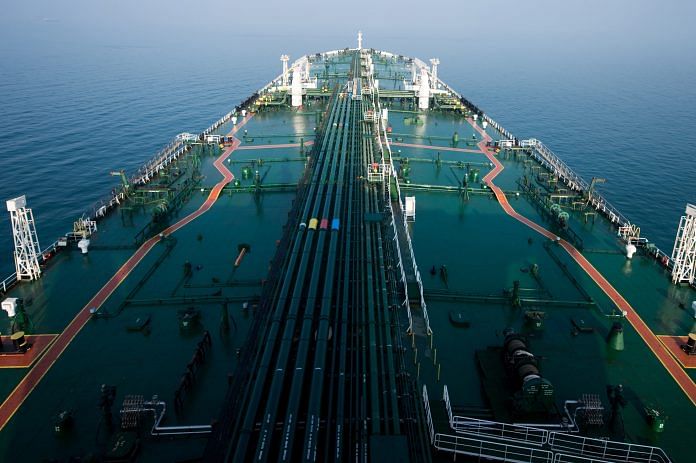Asia’s No. 3 economy faces a wider trade deficit, a worsening of stretched government finances, and slower economic growth if oil prices remain stubborn at the current level.
The surge in oil prices couldn’t have come at a worse time for India.
Asia’s No. 3 economy faces a wider trade deficit, a worsening of stretched government finances, and slower economic growth if oil prices remain stubborn at the current level. That would challenge policy makers trying to strengthen the economy in time for elections next year.
“Higher global crude oil prices are net negative for the Indian economy in almost all aspects,” said Kaushik Das, chief economist at Deutsche Bank AG in Mumbai. He estimates that Brent crude at $75 a barrel could lower his growth estimate for India to about 7.3 percent from 7.5 percent for the year through March 2019.
Inflation Risk
India’s central bank estimates oil at $78 a barrel would shave off 10 basis points from its 7.4 percent forecast for gross domestic product. Moreover, it expects costly crude could stoke inflation by 30 basis points, underpinning expectations that monetary policy will turn more hawkish.
“At the current juncture, we believe that headline inflation will peak at 6.2 percent in the third quarter of this year,” said Hugo Erken, senior economist at Rabobank International. “The pretty hawkish RBI minutes released last week give credibility to our previous stance that inflationary pressure will rise faster than expected, which will force it to hike faster than expected.”
The Reserve Bank of India aims to keep inflation around 4 percent. Pressure to tighten could also increase if the rupee — already Asia’s worst performer this year — sinks further and pushes up India’s oil-import bill.
Rupee Hit
The risks of a weaker rupee are real because India imports more than two-thirds of its crude requirements and analysts at Nomura Holdings Inc. estimate that for every $10 per barrel rise, India’s current-account would deteriorate by 0.4 percent of GDP.
That means if Brent averages $75 per barrel in 2018, India’s current-account deficit would widen to 2.5 percent of GDP from 1.5 percent in 2017, they wrote. That would be the widest gap since the global ‘taper tantrum’ of 2013 and above the current 2.2 percent Bloomberg consensus.
No Love for India’s Rupee as Analysts Rush to Cut Forecasts
Another risk stems from government finances, especially if the government foregoes a levy imposed on oil when prices were low in previous years.
Analysts led by Suvodeep Rakshit at Kotak Institutional Equities in Mumbai estimate that in a scenario where average crude prices are at $70 per barrel and domestic duties were cut by 5 rupees a liter, the gross fiscal deficit will likely slip by 25 basis points. They predict the government will end this fiscal year with a shortfall equivalent to 3.5 percent of GDP, wider than its 3.3 percent target.
Any slippage risks the wrath of global rating companies, most of whom put India near the so-called “junk” status, as well as anger bond investors. The yield on the 10-year sovereign note has surged to 7.76 percent from 7.33 percent at the end of December.
“Rising oil prices risk reversing the improving economic fundamental ‘sweet spot’ experienced during 2014-16,” said Nomura’s analysts.—Bloomberg.






